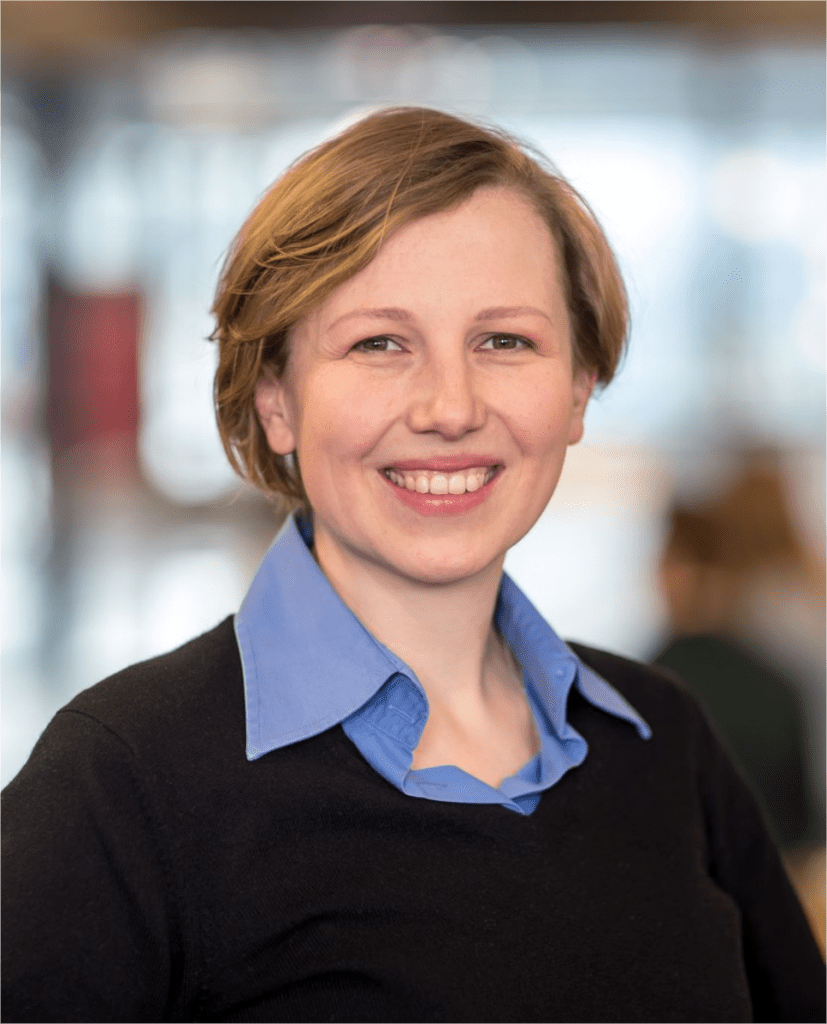Jesus Chamorro Martinez
Associate Professor
Computer Science and Artificial Intelligence

My Computer Speaks Colors! Fuzzy Color Spaces for Image Understanding, Description and Retrieval
The development of ICT technologies, especially those related to mobile devices, has increased the use of digital images in everyday life. As a consequence, there is a growing demand for solutions allowing us an intelligent and friendly interaction with visual data. This interaction requires technical proposals to cover the gap between the unstructured data represented by the images, and the semantics of the natural language (known as the semantic gap).
As a particular case, color is one of the most important visual properties used to describe the objects in a given scene and, consequently, to interact with the system (for example, to refer to a certain object – “look at the red car” – or to make a query – “I’m looking for images where green predominates”-). But, how can we generate automatically a correct expression of the color perceived in an image using linguistic color terms? The complexity of the problem increases if we take into account that color categories have ill-defined boundaries, and they are subjective and context dependent.
To face the above question, in this talk the notions of fuzzy color and fuzzy color space are introduced for modelling the correspondence between computational representation of colors and perceptual color categories identified by a color name. A methodology for learning fuzzy colors based on Gärdenfors’ paradigm of Conceptual Spaces is presented. First, we analyze approaches focused on modelling collections of independent color categories, which define fuzzy boundaries of color categories on the basis of a tessellation of a given color space. Second, new proposals based on IS-A relationships between color categories are introduced, allowing us to define color terms (for example, “red”) by means of the aggregation of related subcategories (“vivid red’, “pale red’, “dark red’, etc.); this approach provides models which are more coherent with human intuition, since it does not consider color categories as mutually exclusive, and allows us to work at different levels of detail when analyzing or processing an image. In addition, the notion of fuzzy color space is formalized as the collection of fuzzy colors corresponding to the color categories employed in a certain context/application and/or for a specific user.
The above approaches are illustrated by defining fuzzy color spaces, using an open source software we have developed, on the basis of the well-known ISCC-NBS color naming system, as well as others based on collections of color names and prototypes provided by users. In addition, the suitability of fuzzy color spaces is shown for different applications including image description and retrieval.
Biography
Jesus Chamorro graduated in Computer Science as Honors from the University of Granada, where he later received his doctorate in the discipline of Computer Science and Artificial Intelligence. Since 1996 he is professor at the University of Granada, where he is currently Associate Professor. His research has focused on the area of computer vision and image processing, specifically in the motion analysis, multimedia information retrieval and fuzzy image processing. His latest interest is in the area of modeling the semantics of visual concepts and the linguistic description of visual information, using computational intelligence technologies, where he has participated in the modeling of low-level concepts like color, texture, and shape, as well as fuzzy image segmentation. In these areas, he has authored more than 90 papers in international journals and conferences, and has participated in over 20 research projects and industrial contracts.
Anna Wilbik
Assistant Professor, Information Systems Group
Department of Industrial Engineering and Innovation Sciences
Eindhoven University of Technology (TU/e), The Netherlands

Process Data and Computing with Words: A Neglected Opportunity?
Working with process data gains more interest both in academia and industry. The amount of data that is generated during the execution of business processes is growing. This data potentially provides a valuable source of information that can be used to improve the performance of business processes, e.g., to help diagnose and resolve problems that may exist, such as performance bottlenecks, particular types of customer cases that are especially hard or expensive to handle, and mistakes that are made at specific points in a process. Academia answers this industry need with increasing numbers of research papers, projects and conferences. However current methods for analysis of process data have their limitations. Fuzzy techniques or application of the computing with words paradigm has the possibility to overcome some of those limitations, such as dealing with uncertainty or imprecision and interpretability of results. I will show two examples how application of fuzzy techniques can provide better insight of process data to the user. In this talk I want to raise the question, whether analyzing process data is a neglected opportunity for the fuzzy domain.
Biography
Anna Wilbik is currently an Assistant Professor in the Information Systems Group of the Department of Industrial Engineering and Innovation Sciences at Eindhoven University of Technology (TU/e) in the Netherlands. She received her PhD in Computer Science from the Systems Research Institute, Polish Academy of Science, Warsaw, Poland, in 2010. In 2011, she was a Postdoctoral Fellow with the Department of Electrical and Computer Engineering, University of Missouri, Columbia, USA. Her research interests are focused especially on linguistic summaries and computing with words. With her research she tries to bridge the gap between the fuzzy sets theory and industrial applications. She makes this connection in research projects collaborating with industry both on the national and the European level. She has published over 80 papers in international journals and conferences.
Christian Wagner
Associate Professor
Department of Computer Science
University of Nottingham, UK

Do Fuzzy Sets Matter? An Interdisciplinary Point of View
Since their inception over fifty years ago, fuzzy sets and systems have been successfully leveraged in a variety of applications, from control, to decision support in medical assessment. In recent years, while substantial advances are still made on a continuous basis, the level of activity and excitement around fuzzy sets and many associated technologies seems to have dimmed. Many new developments on ‘AI’, and indeed, wider society’s attention are focused on big advances in other areas, specifically machine learning. An obvious question may be – do fuzzy sets (still) matter? In this talk, I will try and address this question by focusing on a body of work which centres on the systematic capture and of uncertainty – and its modelling with fuzzy sets. I will discuss a number of applications of such data-driven fuzzy sets, from cyber security to time series prediction. Broadening out, I will take an interdisciplinary point of view to explore the potential of fuzzy sets in new areas, such as quantitative social science and indeed, in supporting a new generation of privacy-preserving AI.
Biography
Christian Wagner is an Associate Professor in Computer Science at the University of Nottingham, UK, and Director of the Lab for Uncertainty in Data and Decision Making (LUCID). His research focuses on modelling & handling of uncertain data arising from heterogeneous data sources such as domain experts and other stakeholders, with a particular emphasis on designing interpretable AI based decision support systems. Applications of his work range from decision support and data-driven policy design in cyber security and environmental management to personalisation and control in manufacturing. He has published over 100 peer-reviewed articles, is an Associate Editor of the IEEE Transactions on Fuzzy Systems journal, Chair of the IEEE CIS Technical Committee on Fuzzy Systems and Task Force on Cyber Security; as well as elected member-at-large of the IEEE Computational Intelligence Society (CIS) Administrative Committee for 2018-2020. He has co/developed multiple open source software frameworks, making cutting edge research accessible both to peer researchers as well as to different research communities beyond computer science.
Erdal Kayacan
Associate Professor
Department of Engineering
Electrical and Computer Engineering
Aarhus University, Denmark

Learning Control and Knowledge Transfer Between Aerial Robots for Improved Accuracy in Trajectory Tracking
Controller design is more troublesome in aerial robots due to, inter–alia, diversity of mission platforms, convoluted nonlinear dynamics, predominantly strict mission and resource constraints as well as demands for guaranteed operability within a wide range of operating conditions that can undergo structural or unexpected changes. Request for increased, almost perfect, accuracy and efficiency of aerial robots pushes the operation to the boundaries of the performance envelope and, thus, induces a need for reliable operation at the very limits of attainable performance. In model-based control, control accuracy highly depends on the representativeness of the model describing the system behaviour. On the other hand, in real life, information one can learn from a system is always uncertain and limited in scope due to the noise from both inside and outside of that system as well as the limitations of our cognitive abilities. Even if an accurate model of the system is available, control system encounters various environmental conditions (such as humidity, temperature, etc.). These time varying working conditions might decrease the control accuracy or even lead overall control system to instability when a conventional controller, e.g. a proportional-integral-derivative (PID) controller, linear quadratic regulator (LQR), is used. Since conventional controllers do not have the ability of adapting themselves to changing conditions, they are not suitable to be used in such changing working conditions. The use of advanced learning algorithms, which can learn the operational dynamics online and adjust the operational parameters accordingly, might be a candidate solution to all the aforementioned problems. This talk will focus on model-free control and learning methods using type-1 and type-2 fuzzy neural networks to handle various real-time aerial robot control problems. Furthermore, due to the cost associated with data collection and training, the topics related to approaches such as transfer learning can also be used to transfer knowledge between aerial robots and thereby increase the efficiency of their control. Last but not least, the use of fuzzy logic for the supervised learning for deep neural networks will also be covered.
Biography
Erdal Kayacan received a Ph.D. degree in electrical and electronic engineering at Bogazici University, Istanbul, Turkey in 2011. After finishing his post-doctoral research in KU Leuven at the division of mechatronics, biostatistics and sensors (MeBioS) in 2014, he worked in Nanyang Technological University, Singapore at the School of Mechanical and Aerospace Engineering as an assistant professor for four years. Currently, he is pursuing his research at Aarhus University at the Department of Engineering as an associate professor.
He has since published more than 110 peer-refereed book chapters, journal and conference papers in model-based and model-free control, parameter and state estimation, and their robotics applications. He has completed a number of research projects which have focused on the design and development of ground and aerial robotic systems, vision-based control techniques and artificial intelligence. Dr. Kayacan is co-writer of a course book “Fuzzy Neural Networks for Real Time Control Applications, 1st Edition Concepts, Modeling and Algorithms for Fast Learning”. He is a Senior Member of Institute of Electrical and Electronics Engineers (IEEE). Since 1st Jan 2017, he is an Associate Editor of IEEE Transactions on Fuzzy Systems.